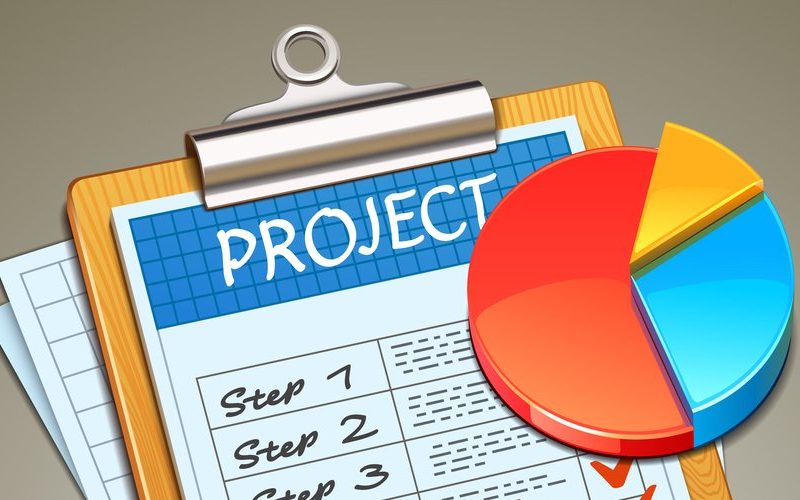When it comes to completing any project, you must know how to get from start to finish. While it may appear simple or that it is all about the chores, the truth is that milestones are the most significant element. Yes, you must perform the responsibilities assigned to you in the project. And you must have the end goal in mind. However, if you don’t set milestones throughout the project, you’ll find it difficult to maintain the required pace or to determine if you’re on the correct track. This is where project milestones come in. Let’s see what milestone means in project management and typical examples of the milestones.
What Are Project Milestones?
Project milestones are particular tasks that must be completed for the project within a certain time frame. These are the points in the timeline where you expect to have some measurable degree of work finished that can be turned in to a project manager or even a client. Milestones should be more significant than the minor chores you complete daily. This is because they aim to inform you whether or not you will complete the project on schedule.
What is a Milestone in Project Management?
A milestone is a defining moment in a project’s life cycle that is used to track progress toward the end goal. A milestone in project management serves as a marker for a project’s start or finish date, external evaluations or input, budget checks, submission of a major deliverable, and so on. It is a reference point that denotes a significant event or a branching decision point within a project.
Why are Project Milestones important?
Milestones ensure that your team is progressing in the right direction. But that’s not all.
Here are a couple of additional things you can do with milestones:
- Create a good project plan and framework.
- Keep an eye on the project’s progress.
- Identify potential bottlenecks.
- Determine when the project will be done.
The final point comes in useful when you need to answer your stakeholder’s favorite question: “Are you done yet?” ”
How to Set Project Milestones
How do you go about creating project milestones? It will necessitate a detailed examination of the project’s overarching purpose as well as the jobs that comprise it. What must be done to deem the project a success? Make a list of the final deliverables that you must produce as well as the timeframe that has been set. You might wish to lay down a deadline that is earlier than the agreed-upon one to give yourself some leeway in case of complications.
Then, write down all of the important tasks that must be completed along the road to meet the deadline. What are the primary responsibilities that would indicate that you are on track? These are the project milestones. You may have one every month for a shorter-term project and one every quarter for a longer-term project. The idea is to have a configuration that works for the type of project you’re working on.
Keep in mind that a milestone does not have to be single activity. It could be a group of chores, or it could be finishing the design component of the project or finalizing the blueprints. Your milestone could be any of a variety of things. The most crucial feature is that it is critical to the project’s completion and will indicate whether you are on track or not.
Who Creates Project Milestone in Project Management?
When it comes to creating project milestones, a variety of stakeholders should be involved. First, chat with the client about what they genuinely want from the project. They will determine the end deliverable, and the two of you (and possibly a boss or manager) will decide on the deadline for that final deliverable. This helps you to plan out all that needs to be done in the meantime and begin the process of defining milestones.
You should also discuss with the client any intermediary deliverables that they desire. They may want you to provide smaller updates during the project. They may have other deliverables that they would like to see while you are working on the project. In either of these scenarios, those types of documents and updates will be milestones that you want to highlight and ensure you meet to keep your client satisfied. These may have deadlines that you and the client, or you and your management, agree on in advance.
What to Look Out For When Creating Milestone in Your Project Management
When it comes to project milestones, there are a few things to bear in mind. You must keep an eye out for each of these things to stay on track and goal. If you don’t consider all of these factors while creating your chart and timeline, you may find yourself in serious trouble when it comes time to execute the final project. You may discover that you are not completing tasks on time, which will not be acceptable to your management or clients.
#1. Dependencies
Dependencies are one of the first things to consider when setting timelines and project milestones. Anywhere one of your team members or one of your smaller teams is dependent on another is a potential source of trouble. It is a location where there may be a delay in the handoff, resulting in the following team or individual being unable to execute the task that has been allotted to them. This is something to bear in mind when creating a milestone.
#2. Delays that are beyond your control
When we talk about delays beyond your control, we’re referring to issues with obtaining supplies or obtaining items from outside merchants. These problems could happen for a variety of causes and at any moment throughout the project’s setup and execution. You could wind up with something that is incorrect or does not arrive at all. There could be complications with vendors or even shipping things to your location. You must account for each of these factors while developing your milestones.
#3. Team Delays
Team delays are things that happen within your team. These are things like someone becoming ill or your team going on strike. There are a variety of ways that the people on your teams could slow down the process, either intentionally or unintentionally, and you want to be prepared for any possibility. There will always be certain things beyond your control within the team, or slowdowns that you can’t account for, but for the most part, you can build in buffers to deal with them.
#4. Changes in the Client
While you’re working on a project, it’s always likely that your customer will make alterations along the road. You must ensure that you are prepared for any type of modification that they may request and that your milestones are updated to reflect this. If a customer makes a change to one of the milestones, let them know how it affects the other milestones and the overall timeframe. It’s best to try to stay on track as much as possible, but that won’t always be attainable. Be clear with clients about the implications of their adjustments for the project.
#5. Timelines that are longer than expected
Your team will all provide you with timeframes and estimates for how long various aspects of the project will take. The greatest thing you can do is incorporate a buffer into these regions to ensure that you are prepared for any further delays. Something that you believed would take a week may take two weeks, while something that you thought would take a day may take several days or more. Allow for some additional time for each work so you don’t fall behind if anything doesn’t go as planned.
#6. Unanticipated Needs
You may begin working on your project just to learn that there are additional requirements that you did not anticipate. Maybe you thought you could get by with the blueprint you have, only to find out it didn’t work. Or perhaps you expected the client to provide a specific item for the project but they did not. All of these unanticipated needs will have an impact on your capacity to meet the milestones you’ve set, which means making additional room.
What Are Some Examples of Project Milestones?
Now that you know what a project management milestone is, let’s look at some examples of the events that are commonly used as project milestones:
Here are five typical project milestones examples:
- Approval of the project
- Examine the requirements
- Approval of design
- Milestones for each project phase
- Final permission is required.
Let’s look at each project milestone example in more detail:
Example #1 of a Project Milestone: Project Approval
This is typically the first significant milestone in the life cycle of a project.
When a significant project stakeholder or senior management approves the project, it gives the project team the green light to start working on it.
Example #2 of a Project Milestone: RequirementsReview
For this significant milestone, you must go over a project plan with your clients and identify what the project will require.
Once all of this is accepted, you can start working on the project.
Example #3 of Project Milestones: Design Approval
You have now completed all of the project requirements. Excellent work.
It is now, however, time to create the project design and show it to the customer or stakeholder.
Unfortunately, they are likely to provide you with a lot of input and scream these three terrible phrases… “do it once more”
And when they eventually like it and approve it (after a million tries! ), you’ve accomplished yet another important milestone.
Example #4 of Project Milestone: Project Phase Milestones
Your project is now well underway, and your team is hard at work developing and implementing the proposed solution.
Working on a project, on the other hand, isn’t just one long, drawn-out activity.
A project is typically separated into phases such as “the development phase” and “the testing phase.”
We use milestones at the ‘start’ and ‘end’ dates of each phase to clearly distinguish between these stages.
Isn’t that convenient?
Example #5 of a Project Milestone: Final Approval
Consider this:
Your crew has completed the product’s construction, and after extensive testing and inspection, you are finally ready.
But don’t get too excited just yet.
You must still convey it to the key stakeholders.
If the project meets the standards, your stakeholders physically offer their approval. (Perhaps not literally.)
Your team may finally raise a glass to the project’s conclusion; you’ve accomplished the final milestone!
These milestones examples apply to any project, regardless of industry. However, as a project manager, you are allowed to create the project milestones that will assist you in planning, executing, and tracking the progress of your project.
Conclusion
When it comes down to it, project milestones are what keep you and your project moving forward. They are responsible for assisting you in achieving your objectives and delivering the outcomes to your client. They are the items that will let you know if your staff is executing their job properly and will allow you to meet all of your deadlines. However, being prepared for issues along the way is also essential. You can follow the project milestones examples to create a milestone for your project. Knowing how to set up and plan for milestones can help you and your team prepare better all around.
Project Milestones FAQs
What is the duration of a milestone?
Milestones usually have no duration; however, some milestones may require one. For example, suppose your project has an approval milestone after a phase, and you know the approval procedure would take a week.
What is project milestone in project management?
Milestones in project management are used to mark the start or end date of a project, external evaluations or input, budget checks, submission of a major deliverable, and so on.






